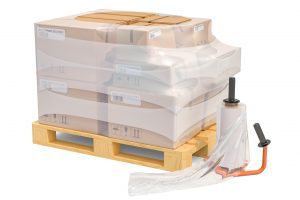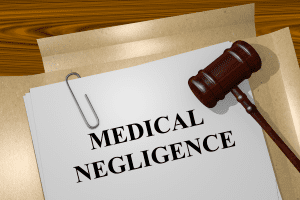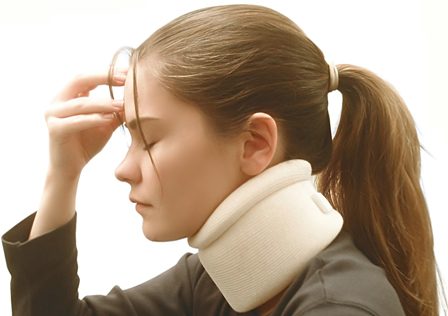Last updated 17th June 2025. No one expects to suffer and injury or burn when using a radiator. However, if you have suffered an injury due to a radiator in a public place, such as a hotel, you may be able to claim compensation. This guide discusses who could be eligible to make radiator injury claims.
We will explore the eligibility criteria for making a radiator accident claim, as well as key information you need to know about the claims process. For instance, we will look at how long after an accident you have to start your claim and what evidence you could gather to support your case.
Moreover, we will look at how personal injury compensation is calculated and what financial losses you can be reimbursed for after a radiator burn injury. Finally, we will consider how a No Win No Fee solicitor’s services could benefit you.
Read on for more information or contact our advisors right away:
- Call on 0800 073 8804
- Contact us online.
- Use the Live Chat feature below.

Select A Section
- How To Make Radiator Injury Claims
- What Kind Of Radiator Burns Can You Suffer From?
- Radiator Burns And Scalds In Public Places
- Evidence Which Could Support Radiator Injury Claims
- Estimating Payouts For Radiator Injury Claims
- Why Choose Legal Expert For Your No Win No Fee Claim?
- Further Information On Public Accident Claims
How To Make Radiator Injury Claims
When you are in a public place, a duty of care is owed by the party that controls the space. This is established by the Occupiers’ Liability Act 1957 which states that the party in control of a space – an occupier – must take steps to ensure the reasonable safety of those who are using the space for its intended purpose.
If you wish to claim, you must be able to prove that:
- You were owed a duty of care.
- It was breached.
- You were injured as a result.
This constitutes negligence, and you could be compensated for any physical, mental, or financial harm that is caused by the incident.
For more details with regard to radiator injury claims, please get in touch with an advisor from our team.
Employee Radiator Burns
Similar accidents could also cause employees burn injuries at work. According to the Health and Safety at Work, etc. Act 1974, employers must take all reasonable steps to prevent employees from being injured. This includes performing regular maintenance checks on equipment, such as radiators.
If your employer does not fulfil this duty of care and you are injured as a result, you could be entitled to make an accident at work claim.
Time Limits On Radiator Injury Claims
As per the Limitation Act 1980, you have three years to start a personal injury claim. This usually starts from the date of the accident.
There are some instances by which the timeline may be paused. This could include:
- The injured person being under the age of 18 at the time.
- The injured person lacking the mental capacity to claim for themselves.
Under these circumstances, the time limit can begin three years from their 18th birthday or when they regain the mental capacity to claim for themselves respectively.
A litigation friend can also start the timeline by claiming on their behalf.
If you would like more details in terms of time limitations or litigation friends, please get in touch with an advisor from our team.
What Kind Of Radiator Burns Can You Suffer From?
The kind of burn you have suffered depends on which layer of your skin is affected and the extent of skin damage. The skin has 3 layers:
- Epidermis, or the outer layer.
- Dermis: The layer under the epidermis, containing the hair follicles, sweat glands and nerve endings.
- Subcutis, or the subcutaneous fat, is the deeper layer of tissue and fat.
Depending on the symptoms and appearance, there are 4 main kinds of burns:
- Superficial Epidermal Burn: The epidermis is damaged and your skin will be red, swollen and painful but without blisters.
- Superficial Dermal Burn: Some part of the dermis is damaged along with the epidermis, and the skin is pale and pinkish, along with small blisters.
- Partial thickness or deep dermal burn: The dermis and epidermis are damaged, and the skin is red and blotchy. Additionally, the skin may become moist or dry, along with swelling and blisters.
- Full thickness burn: All layers are damaged, and the skin is burnt while the tissue appears blackened or pale. The remaining skin could be dry and white or black, having a waxy or leathery texture.
Irrespective of the nature of your burn, if you have suffered the injury due to a radiator, contact us now. Our advisors will examine the eligibility of your claim and guide you about radiator injury claims in general.
Radiator Burns And Scalds In Public Places
Below, we examine how a negligent occupier could cause a radiator burn injury:
- The radiator thermostat is broken in your hotel room. It heats constantly, and you are burned as you bump into it.
- The radiator in a restaurant is leaking. This has been reported to the management, but they have failed to fix it. A small child tries to splash the leaking water and is burned.
If you have endured an injury similar to the examples provided above and would like more details regarding radiator injury claims, please get in touch with our advisors.
Evidence Which Could Support Radiator Injury Claims
We previously mentioned the importance of proving that you were injured due to the negligence of a third party, but how can this be done? One way of doing so is by gathering evidence. Here are some examples of the evidence that can be acquired:
- CCTV footage of the incident.
- Reports from a workplace accident book.
- A diary of your symptoms, treatments, and the impact they have had on your life.
- Gathering the contact details of witnesses for statements to be taken at a later date.
- Keeping correspondence between yourself and the responsible party regarding the incident.
- Keeping a record of any financial losses via a receipt, invoice, bank statement. or pay slips.
One of our personal injury solicitors can help you with this process if you are having any problems. Please get in touch with our advisors for more details.
Estimating Payouts For Radiator Injury Claims
The compensation that could be awarded for radiator injury claims could be made up of two heads of claim. You may receive general damages compensation for any physical or mental pain and suffering.
We have included a table of compensation brackets that have been provided by the Judicial College Guidelines (JCG), a document used to guide claims before the final value in known. These figures are not guaranteed, as all personal injury claims are unique. The top figure in particular is here for demonstration purposes and is not from the JCG.
| Injury | Compensation Guideline | Details |
|---|---|---|
| Multiple Severe Injuries plus Special Damages | Up to £250,000 or more | Not a JCG figure. Settlements may include compensation for more than one injury and related costs, such as plastic surgery and lost wages. |
| Scarring Generally | Likely to exceed £127,930 | Siginificant burns cover more that 40% of the body. |
| £9,560 to £27,740 | Several noticeable scars or a single disfiguring scar to the leg(s) or arm(s) or hand(s) or back or chest. | |
| £2,890 to £9,560 | An individual noticeable scar or multiple superficial scars to the leg(s) or arm(s) or hand(s). | |
| Facial Scarring | £36,340 to £118,790 | A very severe injury to relatively young claimants that causes a disfiguring cosmetic impact as well as major mental effects. |
| £21,920 to £59,090 | Substantial disfigurement to the face as well as considerable psychological impacts. | |
| £11,120 to £36,720 | The worst effects have been or will be reduced by plastic surgery which leaves some cosmetic disability. |
Examples Of Special Damages In Radiator Injury Claims
Special damages may also be included as part of your settlement. This head of claim seeks to reimburse you for any financial losses that are endured due to your injuries.
For instance, you may be unable to work due to depression caused by your injuries. If you suffer loss of earnings, this could be reimbursed. Other areas that might be included as special damages include:
- Care costs.
- Travel expenses.
- Home adaptations.
- Medical expenses.
Remember to keep track of all financial losses, as this could help you when seeking compensation.
An advisor from our team can provide you with a personalised estimate as to how much compensation you could be owed if you get in touch.
Why Choose Legal Expert For Your No Win No Fee Claim?
There are many benefits to having a No Win No Fee solicitor represent you when making a claim. Not only can they use their vast experience to help you build and present your claim, but they can also do this at no upfront cost to you.
Our solicitors typically offer their services via a Conditional Fee Agreement (CFA). This means that no payment is required upfront or during the claims process. If your personal injury claim is a success, your solicitor will deduct a small success fee from the compensation at a legally capped rate and send the rest to you.
Our advisors can assess your claim to see if you qualify to be represented on a No Win No Fee basis. If you do, they could set you up with a solicitor who specialises in radiator injury claims.
How To Contact Us
As previously mentioned, our advisors can offer you free legal advice at a time that is most convenient for you. If they deem you to have an eligible claim, they may set you up with one of our solicitors. To get in touch:
- Call 0800 073 8804.
- Contact us online.
- Speak with our advisors using the Live Chat below.
Further Information On Public Accident Claims
Here we have included additional guides of ours that might be of use to you:
- Read about facial scarring compensation.
- More on the personal injury claims process.
- All about public liability compensation claims.
We have also included further reading that could be beneficial if you have been involved in a radiator accident:
- NHS advice on burns and scalds.
- Health and Safety Executive (HSE) guidance on scalding and burning,
- Should I ring 111 or 999? – the NHS answers.
Thank you for reading this guide on radiator injury claims. If you have any more queries, please do not hesitate to get in touch with our advisors.
















